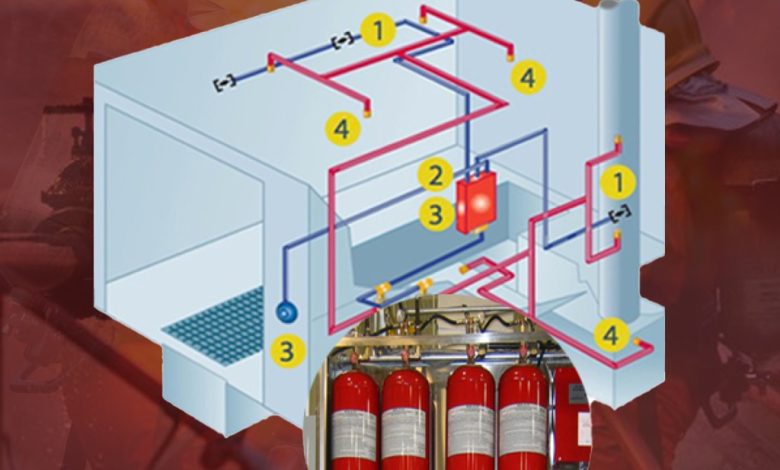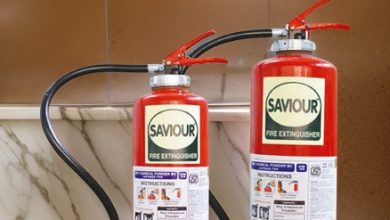Automatic Fire Suppression Systems: A Vital Component of Workplace Safety
Automatic fire suppression system

In today’s business landscape, ensuring a safe working environment is not just a regulatory requirement—it’s a moral and operational imperative. Among the most crucial safety investments a company can make is installing an automatic fire suppression system. These systems play a pivotal role in preventing loss of life, reducing property damage, and ensuring business continuity during unexpected fire emergencies.
At Sri Triveni Crafts, we are committed to providing top-tier fire protection solutions that safeguard workplaces across various industries. Let’s explore how automatic fire suppression systems contribute to overall workplace safety and why they are indispensable for any modern facility.
Why Workplace Fire Safety Matters
Fires in commercial and industrial settings can have devastating consequences. From employee injuries and equipment loss to long periods of operational downtime, the aftermath can be financially and emotionally overwhelming. A proactive approach to fire safety not only protects assets and lives but also builds trust among staff and clients.
Fires can break out due to electrical faults, machinery overheating, flammable chemicals, or kitchen mishaps. Regardless of the source, early detection and rapid response are key—and that’s where automatic fire suppression systems shine.
What is an Automatic Fire Suppression System?
An automatic fire suppression system is a safety mechanism designed to detect and extinguish fires without the need for human activation. Once heat, smoke, or flames are detected, the system activates and releases a fire-suppressing agent such as clean gas, water mist, or foam—depending on the system type and facility needs.
These systems are commonly used in server rooms, commercial kitchens, warehouses, and manufacturing plants, where early fire intervention is crucial.
Benefits of Automatic Fire Suppression Systems
1. Rapid Detection and Response
Unlike manual systems that require someone to notice a fire and take action, automatic systems identify and address fires instantly. This swift response can be the difference between a small incident and a major disaster.
2. Minimized Damage to Property and Equipment
Certain fire suppression agents, such as clean agents or inert gases, are designed to extinguish fires without damaging sensitive equipment. This feature is especially important in environments like data centers, medical facilities, or labs where equipment replacement costs are high.
3. Continuous Protection—Even When Unoccupied
One of the key safety advantages is 24/7 protection. Whether your facility operates overnight or remains closed during holidays, these systems ensure round-the-clock fire defense.
4. Compliance with Safety Regulations
Businesses must adhere to local and national fire safety codes. Installing an appropriate suppression system helps ensure compliance, avoids penalties, and demonstrates a commitment to maintaining a safe work environment.
5. Improved Employee Confidence and Morale
Knowing that their workplace is equipped with high-quality fire suppression can make employees feel more secure. This assurance fosters a positive work atmosphere and reinforces your company’s reputation as a safety-first organization.
Choosing the Right System for Your Workplace
1. Assess the Fire Risks
Understanding the types of fire hazards in your facility is crucial. For instance:
-
Office environments might need systems to protect electronic devices.
-
Restaurants require systems designed for grease fires.
-
Manufacturing units may need heavy-duty systems for flammable chemicals or machinery.
2. Select the Suitable Agent
Common suppression agents include:
-
Clean agents (e.g., FM-200, Novec 1230): Ideal for electronics.
-
Wet chemical systems: Perfect for kitchen fires.
-
Water mist systems: Effective for general areas with minimal water damage.
-
CO2 systems: Powerful, but only for unoccupied areas due to oxygen displacement.
3. Consult with Experts
The best approach is to work with a certified fire safety provider like Sri Triveni Crafts. Our specialists conduct site assessments and design custom solutions tailored to your facility’s layout and needs.
Maintenance and Monitoring
Installing the system is just the first step. Regular maintenance and monitoring are essential to ensure optimal performance. Annual inspections, system testing, and periodic upgrades help keep your fire safety infrastructure reliable and compliant.
Conclusion
A well-implemented automatic fire suppression system is more than just equipment—it’s a commitment to safety, responsibility, and long-term business resilience. Whether your goal is to protect lives, preserve assets, or meet regulatory demands, these systems are a vital component of any workplace safety plan.
By partnering with trusted professionals like Sri Triveni Crafts, you ensure that your business is not only protected but also prepared for the unexpected.
Frequently Asked Questions (FAQs)
1. How do automatic fire suppression systems work?
They detect fires using heat or smoke sensors and activate automatically, releasing a suppression agent to extinguish or control the fire.
2. Are these systems suitable for small offices?
Yes. Smaller offices can benefit from compact, clean-agent systems that provide quick response with minimal disruption.
3. Can suppression systems damage electronics?
Not all do. Clean agent systems are designed to be non-conductive and leave no residue, making them safe for electronic equipment.
4. Is it necessary to test the system regularly?
Yes. Routine testing and maintenance ensure that the system works properly when needed and complies with safety standards.
5. Do I need a different system for my kitchen and my server room?
Most likely, yes. Each area has different fire risks and suppression needs. It’s best to install system types tailored to each environment.




